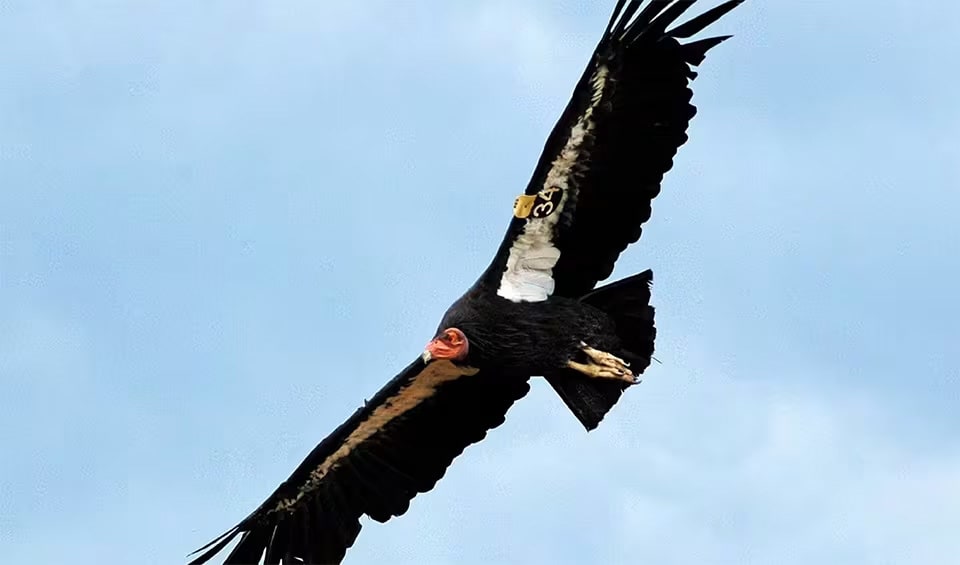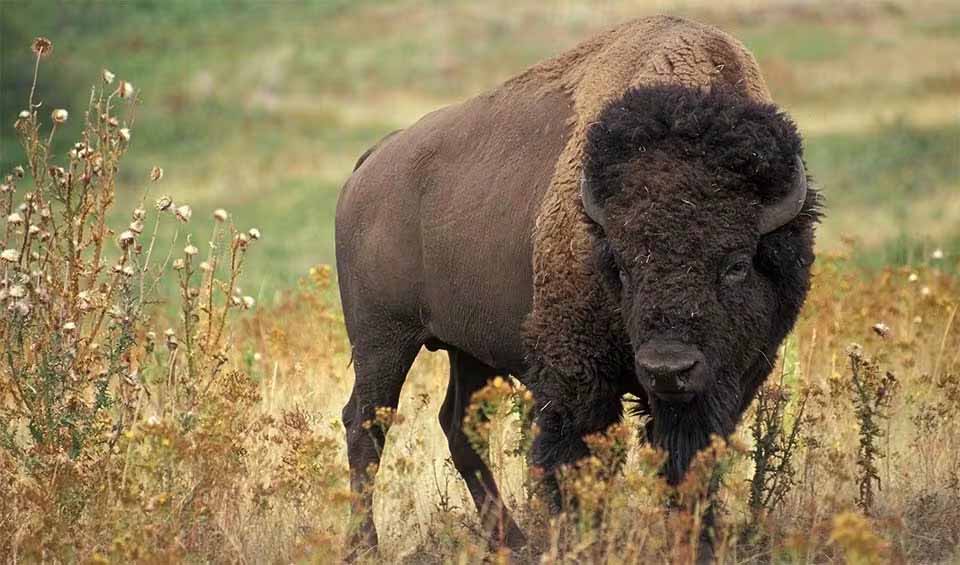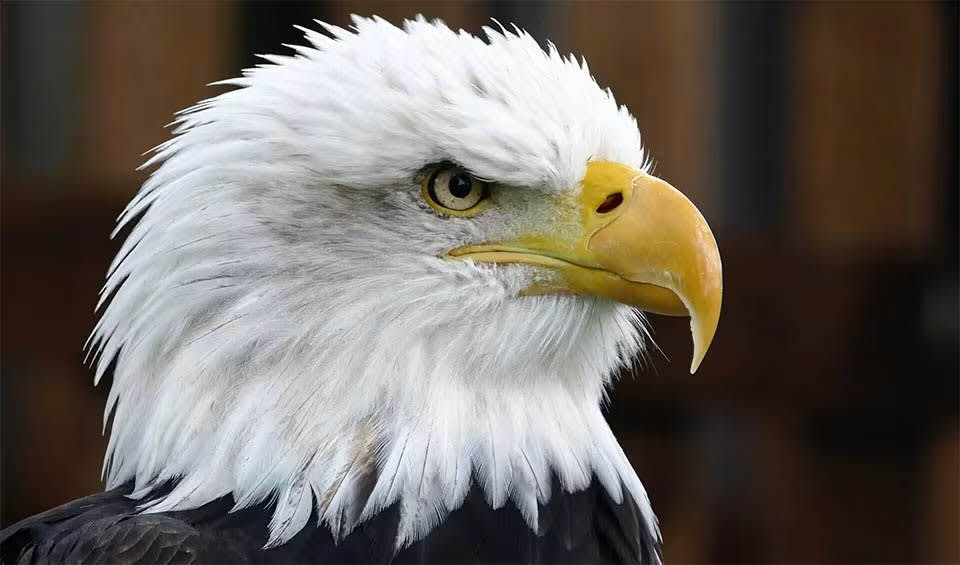A mosaic of beliefs, morals, and traditions, America is a melting pot not only in terms of its people but also in the sense of the amazing variety of life forms that it is home to. A country with a high degree of endemism in a variety of habitats from the Nearctic, Neotropical, and Oceanian biogeographic regions. This biodiversity is reflected in its diverse landscapes, from the frozen tundra of Alaska to the mystical swamps of the Florida Everglades, and from tall redwoods in California to the magical bogs of Maine. California, with 13 ecoregions spread across four biomes, trails Alaska as the state with the greatest biodiversity, with 15 ecoregions spanning three biomes. Approximately 13% of the United States’ total geographical area is protected, also has 41 Ramsar sites and 22 World Heritage Sites notified.
Unfortunately, the biodiversity in the U.S. is facing serious threats: 41% of ecosystems are at risk of collapsing, 40% of animal species and 34% of plant species face extinction. In 42% of the mainland United States, development has created non-native landscapes. Major threats include climate change, habitat destruction, and invasive species. Temperate and boreal forests, grasslands, shrublands, and woodlands are particularly vulnerable.
Aiming to protect 30% of their land and ocean by 2030, Vermont, Utah, California, Washington, and New York are joining worldwide campaigns such as 30×30, even in the absence of a National Biodiversity Strategy.
Four pillars elaborated:
Protected areas (PAs) in the U.S. are managed by federal, state, tribal, and local authorities, resulting in varied protection levels. There are 42,826 protected areas covering 13% of U.S. land. The National Park Service administers 417 national parks, constituting 3.4% of land area, while the Bureau of Land Management (BLM) manages extensive western lands, managing permits for grazing, mining, and oil and gas production. The U.S. has very low representativeness (14.8) of the ecological diversity in terrestrial PAs. Land Management
Land Management
Marine conservation is quite strong, with 1,000+ National Marine Protected Areas (MPAs), covering 26% of U.S. marine waters. Interestingly, 3% of these are “no take” MPAs, zones where no fishing or extraction is allowed.
Temperate grasslands, boreal grasslands, and shrublands are highly threatened, with 51% of grassland types at risk (grassland loss score 52.50). Similarly, 40% of native forests are facing significant pressures, leading to loss of tree cover. Although smaller in size, tropical ecosystems are also highly threatened.
Each of America’s 50 states plays a crucial role in preserving the nation’s rich biological heritage. The United States is home to a wide variety of biological species, with over 200,000 documented species making up more than 10% of the world’s known species. The country is a global hotspot for biodiversity in many groups of organisms. Unfortunately, around one-third of the well-known plant and animal species are at risk, and over 600 species have already gone extinct. Threats to Biodiversity
Threats to Biodiversity
Destroying wetlands, habitat degradation, building dams that modify the course of natural water flows, wildlife diseases, invasive species, and climate change are factors contributing to biodiversity loss.
The International Union for Conservation of Nature (IUCN) Red List, is a global standard/benchmark for classifying endangered species. The U.S. uses the Endangered Species Act (ESA) for categorizing and protecting endangered species and not the IUCN. About 40.3% of birds listed on the IUCN Red List aren’t protected by the ESA in the U.S. And more than 80% of other groups, like mammals and amphibians, aren’t fully covered either. The difference between the ESA and the IUCN Red List happens because they have different goals and rules for deciding which species are endangered. This leads to inconsistencies in conservation efforts and priorities.
The U.S. faces major challenges in tackling biodiversity loss, even with existing conservation laws. The Endangered Species Act aims to prevent extinction, but it can sometimes allow harmful activities. Similarly, the Clean Water Act aims to control pollution but can cause habitat destruction at the same time. The absence of a clear national biodiversity priority makes these policy issues worse. To fix this, the U.S. needs a comprehensive national biodiversity strategy that aligns laws, improves capabilities, and encourages cooperation among all stakeholders. Capacity and Governance
Capacity and Governance
The U.S. has not ratified the Convention on Biological Diversity but has made significant efforts to conserve biodiversity. The America the Beautiful campaign aims to conserve 30% of U.S. lands and waters by 2030, while the U.S. Plan to Conserve Global Forests pledges $9 billion for forest protection. The President’s 2022 Earth Day Executive Order focuses on forest protection, valuing nature economically, and using nature-based solutions for climate change. Improving capabilities and promoting stakeholder cooperation can help the U.S. address biodiversity challenges.
The U.S. is developing a National Biodiversity Strategy (NBS) to tackle environmental challenges. It is in the early stages and progressing through a Senate resolution, the NBS aims to comprehensively address biodiversity issues. Once finalized, it will promote open dialogue and stakeholder involvement to create a detailed conservation roadmap. Future Trends
Future Trends
There are plans to reintroduce the Recovering America’s Wildlife Act (RAWA) in the 118th Congress. This bill proposes to allocate approximately $1.3 billion annually to protect endangered and at-risk species, strengthening conservation efforts, particularly for lesser-known species often overlooked in conventional conservation laws.
However, amidst these pro-biodiversity efforts, concerns arise over activities like US-led Arctic drilling for oil and gas. Such activities threaten local communities and wildlife while sabotaging global efforts to curb carbon emissions. The Arctic is warming at twice the global pace, and vulnerable species like whales, polar bears, seabirds, and walruses face escalating risks from climate change, stressing the urgent need to prevent potential habitat destruction from oil spills to a place they call
‘home’.
Biodiversity
Spanning a vast and diverse landscape, The United States is one of the most biodiverse countries in the world. Its wide range of ecosystems includes temperate forests, deserts, grasslands, wetlands, alpine regions, and extensive coastlines. The diverse climates and terrains support a rich array of flora and fauna. In the Pacific Northwest, temperate rainforests host towering conifers like Douglas fir and redwood, home to species such as the spotted owl and Roosevelt elk. The deserts of the Southwest, including the Sonoran and Mojave, are inhabited by unique flora like saguaro cacti and fauna such as the desert tortoise and Gila monster.The United States also boasts significant marine biodiversity along its extensive coastlines. Coral reefs in Florida, particularly in the Florida Keys, are vibrant ecosystems supporting a variety of marine life, including colorful corals, fish, sea turtles, and manatees. The coastal wetlands of the Gulf of Mexico and the Atlantic provide crucial habitats for migratory birds, alligators, and diverse fish species. The Great Lakes, the largest group of freshwater lakes by total area in the world, support a wide variety of fish and aquatic plants.
Alaska’s vast wilderness areas, including Denali and the Arctic National Wildlife Refuge, are home to iconic species such as grizzly bears, wolves, caribou, and bald eagles. With their unique volcanic landscapes, the Hawaiian Islands host numerous endemic species, including the Hawaiian monk seal and various honeycreepers. The Everglades in Florida, a vast network of wetlands, support species like the American crocodile, the West Indian manatee, and the Florida panther. In the table below are the number of known species in several main groups, how many of these species are Threatened with extinction, and how many of them are Endemic (unique to United States only):
| Species (World rank) |
Threatened | % Threatened | Endemic | % Endemic | |
|---|---|---|---|---|---|
| Mammals | 476 (#9) | 40 | 8.4% | 104 | 21.8% |
| Birds | 820 (#26) | 83 | 10.1% | 71 | 8.7% |
| Reptiles | 558 (#10) | 37 | 6.6% | 107 | 19.2% |
| Amphibians | 345 (#12) | 56 | 16.2% | 203 | 58.8% |
| Fishes | 3,089 (#7) | 279 | 8.9% | 373 | 12.1% |
| Plants | 19,063 (#12) | 510 | 2.7% | 1,979 | 10.4% |
mammals
American black bear
America’s smallest and most widely distributed bear, endemic to North America
Cougar
The most widespread large mammal of the Americas: from Canada’s Yukon to the Andes in South America
Black-footed ferret
Often seen engaging in antics that include hopping sideways and backwards, a behavior known as the “ferret dance”
birds
American flamingo
Famous for its habit of standing on one leg
Painted bunting
A tiny bird with colors so bright, it looks like it was painted by an artist
California condor
The largest soaring bird of North American continent
reptiles
Florida softshell turtle
One of the largest freshwater turtles in the United States
Gila monster
A small group of nest predators that contains venomous lizards
American alligator
A conservation success story, this species was brought back from the brink of extinction
amphibians
Western toad
Can tolerate colder temperatures better than many other amphibian species
Texas blind salamander
A cave-dwelling creature that spends all its life hiding underground in the water
American bullfrog
Introduced to many regions where it is now considered an invasive species
National Animals
American bison
Hunted almost to extinction, they were the first species to be reintroduced to nature
Bald eagle
The magnificent national bird of the United States, distinguished by a snowy white head, neck, and tail


















